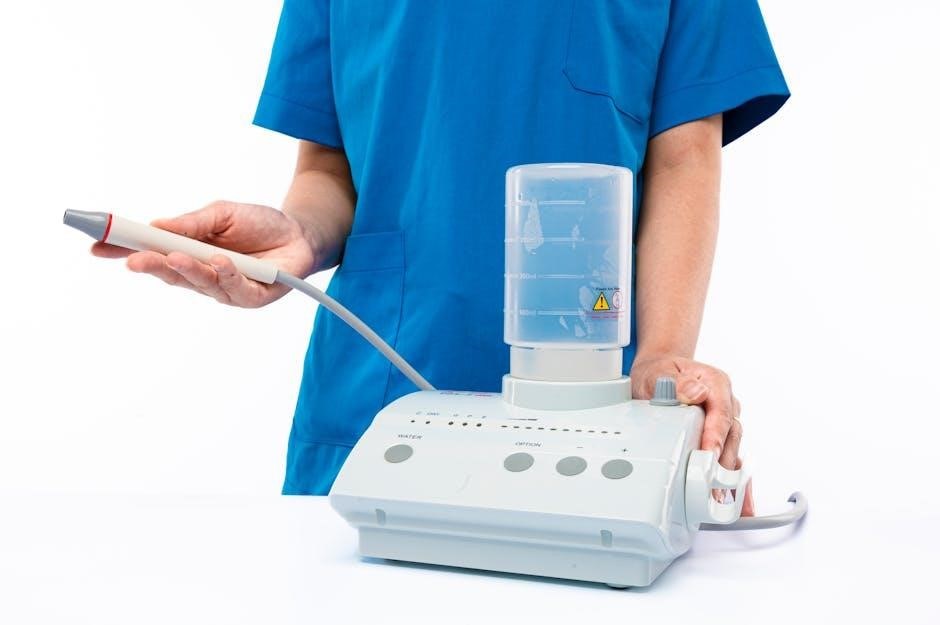Nursing diagnosis handbook provides comprehensive guide to nursing diagnosis and care planning using three-step system and evidence-based nursing practices effectively always.
Overview of the Handbook
The nursing diagnosis handbook is a reference guide for nurses, providing a comprehensive overview of nursing diagnoses and care planning. It uses a three-step system to guide nurses through client assessment, diagnosis, and care planning. The handbook is organized to allow nurses to easily look up nursing diagnoses and care plans, making it a valuable resource for nursing practice. It includes information on evidence-based nursing practices and diagnostic reasoning, helping nurses to build their skills and confidence in nursing diagnosis and care planning, with a focus on individualized care and effective outcomes always available.

Nursing Diagnosis and the Nursing Process
Nursing diagnosis is a critical step in the nursing process using evidence-based practices and diagnostic reasoning skills effectively always online;
Understanding the Nursing Process
The nursing process is a systematic approach to providing care, involving assessment, diagnosis, planning, implementation, and evaluation. This process is essential for delivering high-quality patient care. The nursing diagnosis handbook provides a framework for understanding the nursing process and applying it in practice. By using this handbook, nurses can develop a deeper understanding of the nursing process and improve their skills in assessment, diagnosis, and care planning. The handbook also provides guidance on how to use evidence-based practices and diagnostic reasoning skills to inform the nursing process and improve patient outcomes, using a three-step system effectively always online with ease.

Guide to Nursing Diagnoses
Nursing diagnoses are categorized and organized systematically for easy reference and application always using evidence-based practices effectively online with guide.
Organizing Nursing Diagnoses
Nursing diagnoses are organized using a taxonomy system, with categories and subcategories to facilitate easy lookup and reference. The handbook provides a comprehensive list of nursing diagnoses, each with a definition, related factors, and defining characteristics. This organization enables nurses to quickly identify relevant diagnoses and develop effective care plans. The taxonomy system used is based on NANDA’s Domains, Classes, Diagnostic Concepts, and Diagnoses, ensuring consistency and accuracy in nursing diagnosis and care planning, making it a valuable resource for nursing professionals, with a user-friendly format and easy navigation.
Nursing Diagnosis Handbook Editions
Nursing diagnosis handbook has multiple editions with updates and revisions always available online for easy access and reference purposes only.
Updates and Editions
The nursing diagnosis handbook has undergone several updates and editions, with the 13th edition being the most recent, featuring revised nursing diagnoses and care plans. The handbook is updated regularly to reflect changes in nursing practice and NANDA-I approved diagnoses. Each new edition includes additional features and tools to support nurses in creating individualized care plans. The updates and editions are designed to provide nurses with the most current and accurate information available, enabling them to deliver high-quality patient care. The handbook’s regular updates ensure that nurses have access to the latest research and best practices in nursing diagnosis and care planning always available online.

Authors and Contributors
Authors Betty J Ackley and Gail B Ladwig are renowned nursing experts and educators always.
Expertise and Credentials
Authors have extensive experience in nursing education and practice, with advanced degrees in nursing, including MSN and EdS, and registered nurse credentials always. They have written several editions of the handbook, demonstrating their expertise in nursing diagnosis and care planning. Their credentials and expertise have earned them recognition as leading authorities in the field of nursing diagnosis, making their handbook a trusted resource for nurses and nursing students. The authors’ qualifications and experience have contributed to the handbook’s reputation as a comprehensive and authoritative guide to nursing diagnosis and care planning, used by nurses worldwide.
Applications and Uses
Nursing diagnosis handbook is used in clinical settings and education to guide nursing practice and care planning effectively always online.
Clinical Applications
Clinical applications of the nursing diagnosis handbook include guiding nursing practice and care planning in various settings, such as hospitals and clinics, using evidence-based practices and NANDA-approved diagnoses, to improve patient outcomes and quality of care, and to enhance nursing education and professional development, with the ultimate goal of providing high-quality patient care and promoting positive health outcomes, and the handbook is widely used by nurses and other healthcare professionals to inform their practice and decision-making. The handbook is a valuable resource for nursing students and professionals. Nursing care plans are created using the handbook.

and Recommendations
Nursing diagnosis handbook is highly recommended for nursing professionals and students always using evidence-based practices effectively online every day.
Importance of the Handbook
The nursing diagnosis handbook is a crucial resource for nursing professionals and students, providing a comprehensive guide to nursing diagnosis and care planning. It offers a wealth of knowledge and practical tools to help nurses build skills in diagnostic reasoning and critical thinking. The handbook is essential for creating individualized nursing care plans and evaluating outcomes. Its importance lies in its ability to support evidence-based nursing practices, making it a valuable asset for nursing education and practice. The handbook’s relevance and significance are evident in its widespread adoption and recommendation by nursing experts and organizations, facilitating effective nursing care.
